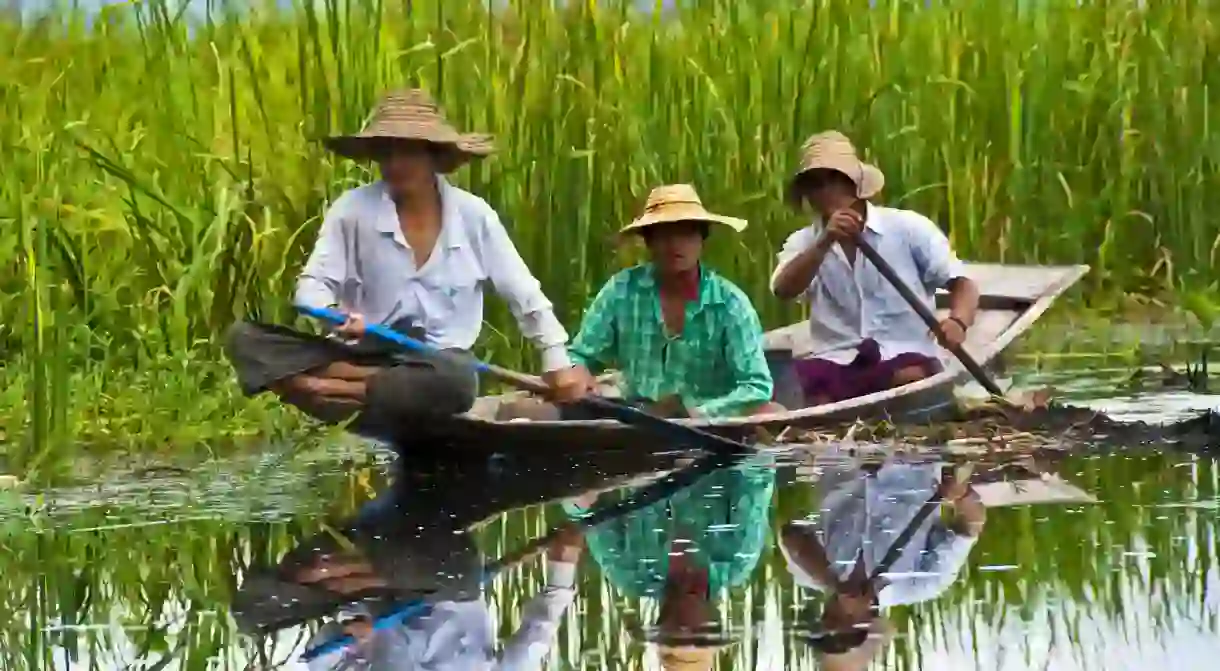All You Need to Know About Myanmar's Traditional Dress Designs

Traditional dress is still worn by many Myanmarese people around the country. Visitors are more likely to see locals dressed in a traditional wardrobe than modern clothing, even in the modern city of Yangon. Here, all you need to know about Myanmar’s traditional dress designs.
Burmese traditional wear
Regardless of where visitors frequent, they are going to come across the traditional Myanmarese or Burmese dress. Myanmarese men and women across the country are rocking either a pasoe or htamein both of which are considered to be a longyi. This clothing is the traditional wear for both men and women. Weaving is another traditional art form in the country, and those who are elite still wear the lun-taya acheik cloth. Each ethnic minority in Myanmar have their own textile traditions.

What is a Pasoe?
Pasose are the traditional pants worn by men in Myanmar. These pants, which are actually just a sheet of cloth, are very functional, comfortable, and breathable when Myanmar gets to be unbearably hot. The sheet used to fold into the longyi is usually about two meters in length and 80 centimeters wide. The garment, though it may look like it is, is not tied at all, rather folded in such a way to keep it around the wearer’s waist. Myanmar is not the only country where men are seen wearing something like this. India, Sri Lanka, and Bangladesh all have similar garments predominantly worn by men. A paseo is usually decorated with stripes or checkers and are more often than not, dark in color.

What is a Htamein?
While denim styles come and go, htameins are here to stay in Myanmar. This is the traditional garment worn by women across the country in Myanmar. Unlike the male’s version which are usually plain in color, htameins can be vibrant, colorful, and filled with patterns. They are also made up of a number of different materials. These pieces of cloth used to be folded and wrapped like the men’s paseo, however, the design got more fashionable if you will. Some cylindrical skirts had a strip sewn to the top of the htamein to keep from folding it, making it look neater and preventing it from wrinkling. These skirts can be made for both formal affairs as well as everyday wear.

History
The traditional Burmese wardrobe dates back to 1750s. It was worn in the Konbaung court, and the clothing was embellished with stunning jewelry by those who held positions of power, for example, court officials. Women wore floral head ornaments, uniquely decorated blouses, felt footwear, and a htamein, which many women can still be seen wearing today. Men’s traditional outfits were embellished with a turban, hnyat-phanat slippers, a silk jacket embroidered with fur, and a cotton shirt. The dress changed slightly at the end of the British era. It also changed when Indian immigrants made their way to Myanmar, the style was altered slightly to mimic their dress.

Ethnic groups
The four main groups in Myanmar are the Shan, Akha, Nagas, and the Pa-O. These Burmese indigenous people and ethnic minorities wear various types of clothing that differ from the dress worn by most of the people. The Shan women, however, wear the htamein. They are relatively light and are, for the most part, well-suited for Myanmar’s hot climate. Shan men wear Mandarin-style tops and loose-fitting slacks.













